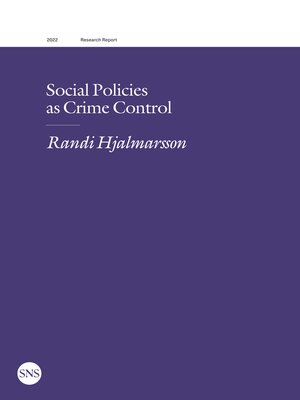
Sign up to save your library
With an OverDrive account, you can save your favorite libraries for at-a-glance information about availability. Find out more about OverDrive accounts.
Find this title in Libby, the library reading app by OverDrive.



Search for a digital library with this title
Title found at these libraries:
| Library Name | Distance |
|---|---|
| Loading... |
Policy makers around the world can reduce crime through two types of complementary polices criminal justice policies (e.g. police and sanctions) and social policies (e.g. education, labor market) that do not explicitly target crime. The latter are an often-overlooked policy response. This report discusses the potential of seven non-criminal justice policy arenas education, alcohol, early childhood environment, healthcare, employment, welfare, and military conscription as crime control channels. For each policy arena, the report highlights both the theoretical mechanisms through which crime can be affected and the extent to which this theory is supported by empirical evidence. Criminal justice populations are negatively selected in many dimensions, including worse childhood environments, and education, employment and health outcomes. Whether or not social policies targeting these factors can reduce crime depends on whether these factors actually cause crime or are simply correlated with criminal behavior. Careful attention is paid throughout the report to this distinction, and research that uses natural experiments and quasi-experimental research designs to convincingly disentangle correlation and causation is highlighted.







